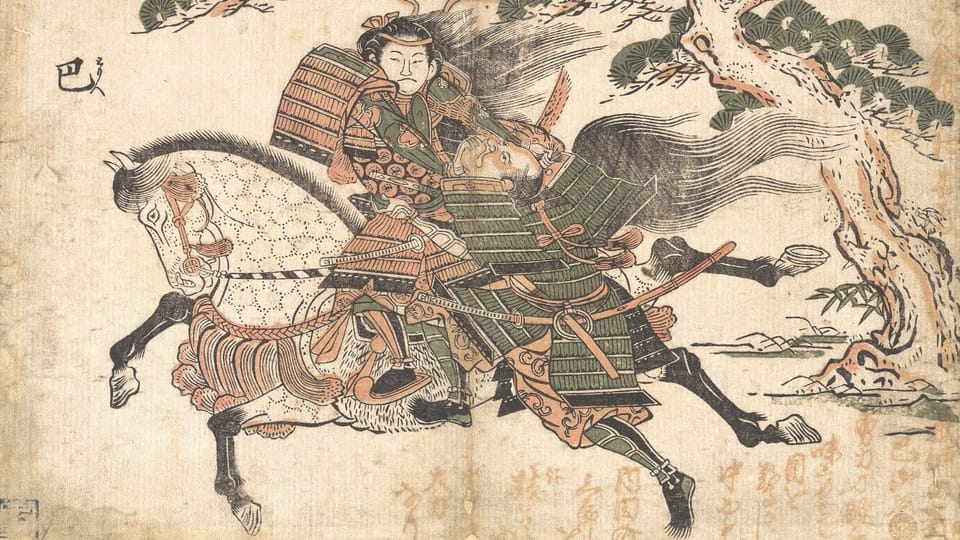Onna-Bugeisha: Japan’s Fearless Female Warriors

Listen up because I’m about to drop some knowledge on you that’s probably gonna blow your mind. You think samurai culture is all about dudes in armor swinging katanas, right? Wrong. Let me introduce you to the onna-bugeisha. These are the badass women of the samurai class who weren’t just sitting pretty while their men went off to war. No, these women were trained fighters, warriors defending their homes, families, and honor with the same grit and determination as any male samurai. Yeah, that’s right, these ladies weren’t just some footnotes in the history books—they were front and center, right in the thick of it.
Now, let’s set the scene. We’re talking ancient Japan, way before the samurai class officially strutted onto the stage during the Heian period (794–1185). Even back then, there were tales of women who could kick some serious ass. Take Empress Jingū, for example. Legend has it she led an invasion into Korea in the 3rd century. That’s right, leading an army into battle. So, the idea that women could mix it up in combat isn’t exactly a new one in Japanese culture.
But let’s zero in on the onna-bugeisha, the ones who really started making waves during the Kamakura period (1185–1333). This was a time when Japan was all about chaos—clan wars, rivalries, Mongol invasions, the works. In this kind of environment, you better believe the ability to defend your turf was everything. And since the men were often out slicing and dicing on some battlefield, the women back home had to step up. Enter the onna-bugeisha. These women were not just picking up the slack; they were getting some serious training, learning to defend their homes like total pros.
These women didn’t just grab any old weapon and start swinging. No, they were specialists, often trained in the use of the naginata. Think of it as a pole weapon with a curved blade. Perfect for a woman warrior—keeps the bad guys at a distance, and let’s be honest, it looks damn cool in a fight. The naginata wasn’t just a tool; it became the symbol of the onna-bugeisha, embodying their strength and adaptability. And let’s not forget the kaiken, a short dagger every samurai woman carried for self-defense. These women knew how to handle themselves, whether it was slicing through enemy ranks or dealing with close-quarters combat.
But it wasn’t all just about swinging weapons around. The training of an onna-bugeisha was as intense as it got. We’re talking martial arts, archery, strategy, tactics—you name it. These women were preparing for the gritty realities of war. And here’s the kicker: they weren’t just warriors. They were leaders. While the men were off doing their thing, these women managed the household, the finances, and the estate. They were the glue holding everything together.
Let’s drop some names here because these women deserve some serious shout-outs. First up, Tomoe Gozen. She’s like the Beyoncé of the onna-bugeisha—a total icon. Tomoe Gozen was a late Heian warrior known for her beauty, bravery, and battle skills. She fought alongside Minamoto no Yoshinaka during the Genpei War (1180-1185), and the tales of her exploits are the stuff of legend. Think of her as a one-woman wrecking crew who could take on the fiercest enemies and come out on top.
Then there’s Nakano Takeko, a warrior from the late Edo period who didn’t just fight—she led an army of women, the Jōshitai, during the Boshin War (1868-1869). Picture this: a group of women, armed with naginatas, charging into battle. Nakano Takeko fought with such ferocity that when she fell in battle, she made sure to go out with honor rather than be taken captive. Talk about going out in a blaze of glory.
So, what’s the deal with these women? Why were they so important? The onna-bugeisha were more than just defenders of their homes; they were the heartbeat of samurai culture. They stood for loyalty, honor, and martial prowess—values that were held in the highest regard in feudal Japan. And they weren’t afraid to step out of the box to challenge the gender norms of their time. These women proved they could fight, lead, and hold their own just like any man, if not better. They didn’t just talk the talk; they walked the walk.
The legacy of the onna-bugeisha has lived on in Japanese culture—sometimes celebrated, sometimes mythologized. Their stories have been told in literature, theater, and, yeah, even modern media like films and TV shows. They’re portrayed as these larger-than-life figures, and why not? They were warriors, protectors, leaders. They balanced strength with grace, embodying a warrior spirit that transcends gender.
Now, let’s not sugarcoat it: the role of onna-bugeisha started declining during the Edo period when things in Japan became more stable and peaceful. With fewer wars, the need for these badass women to pick up a weapon and fight dwindled. By the time Japan was moving towards modernization in the late 19th century, the whole samurai class, not just the onna-bugeisha, was fading into history. But don’t think for a second that their legacy disappeared with them.
Even today, the onna-bugeisha remain a symbol of female strength and agency. They’re a reminder that women have always been capable of rising to the occasion, meeting the demands of war and leadership with the same guts and glory as any man. They weren’t just warriors but a testament to courage, strength, and resilience. And that, my friends, is a story worth telling over and over again.
Want to learn more? Of course you do. Read Stephen Turnbull’s Samurai Women 1184–1877.
So, the next time you think about samurai, don’t just picture a bunch of dudes in armor. Remember the onna-bugeisha—the women who fought, led, and inspired, proving that the warrior spirit knows no gender.
